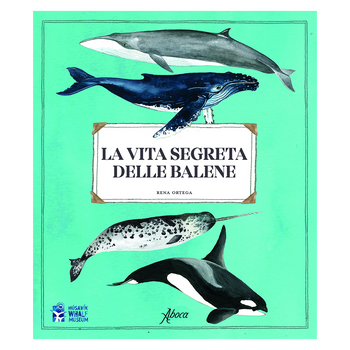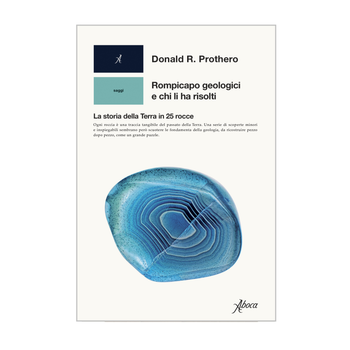You have no items in your shopping cart.
Viaggio nell’Italia dell’Antropocene Viaggio nell’Italia dell’Antropocene
La geografia visionaria del nostro futuro La geografia visionaria del nostro futuro
Telmo Pievani - Mauro Varotto Telmo Pievani - Mauro Varotto
€22,00
With maps by Francesco Ferrarese
With maps by Francesco Ferrarese
Availability:
In Stock
Sku: LIBVIANTRO
ISBN/EAN: 9788855230612
A startling and provocative book that envisages the changes we will witness in Italy's geography if we are unable to stop the effects of climate change.
As we all unfortunately know by now, humanity is having a devastating impact on the planet. The geographical reality that we define as Italy has been extremely mobile over the millennia as a result of tectonic, morphogenetic, climatic and ultimately anthropic factors. We can therefore state with scientific certainty, that Homo sapiens is contributing to a change in the climate and therefore also in the shape of the earth's surface. Given this unprecedented acceleration, we cannot help but wonder: how will the world change in the near future? If everything continues to go in the wrong direction and we do not take the necessary measures to avoid it, we will be forced to witness the melting of perennial sea ice and rising sea levels. To help us reflect on the actual risks we could encounter, philosopher and evolutionist Telmo Pievani and geographer Mauro Varotto have envisioned how Italy will transform, projecting us into the dystopian year 2786. Exactly 1,000 years after the outset of Goethe's journey to Italy, Milordo's journey on board the boat Palmanova opens in the visionary geography of our future: The Po Valley will be almost completely flooded; the people of Milan will be able to go to the beach at the Lidos of Lodi; Padova and many other cities will be completely submerged; others will be converted into a system of urban pile dwellings; the coasts off Le Marche, Abruzzo and Molise will resemble fjords; Rome will be a tropical metropolis; Sicily will be a rocky desert similar to those we see in Libya and Tunisia... Region, by region, Milordo's journey will be backed up by a detailed scientific analysis that will use data and forecasts to justify the reasons for this territorial change, illustrated by a series of highly detailed maps created by Francesco Ferrarese. Fortunately, this scenario is still considered unrealistic, but it is useful in helping us understand that Italy’s structural heritage is by no means a foregone conclusion and that the responsibility for directing it one way or another relies entirely upon ourselves.
Telmo Pievani (1970), is Professor of Philosophy of the Biological Sciences at the University of Padova. His numerous publications include: Libertà di migrare. Perché ci spostiamo da sempre ed è bene così (Einaudi, 2016, with Valerio Calzolaio), Sulle tracce degli antenati. L’avventurosa storia dell’umanità (Editoriale Scienza, 2016), Homo sapiens e altre catastrofi (Meltemi, 2018), La Terra dopo di noi (Contrasto, 2019, photographs by Frans Lanting) Imperfezione. Una storia naturale (Raffaello Cortina, 2019) and Finitudine. Un romanzo filosofico su fragilità e libertà (Raffaello Cortina, 2020). He has been the director of the University of Padova's web magazine "Il Bo live" since 2018. He collaborates with "Il Corriere della Sera" and with the magazines "Le Scienze" and "Micromega".
Mauro Varotto (1970) is Professor of Geography at the University of Padova. Since 2008, he has coordinated the Terre Alte Group at the Central Scientific Committee of the Italian Alpine Club. He has published Il grigio oltre le siepi. Geografie smarrite e racconti del disagio in Veneto (nuovadimensione, 2005, with Francesco Vallerani), La montagna che torna a vivere. Testimonianze e progetti per la rinascita delle Terre Alte (nuovadimensione, 2013), Paesaggi terrazzati d’Italia. Eredità storiche e nuove prospettive (Franco Angeli, 2016, with Luca Bonardi), Montagne del Novecento. Il volto della modernità nelle Alpi e Prealpi venete (Cierre, 2017) and Montagne di mezzo. Una nuova geografia (Einaudi, 2020). He conceived and produced the documentary, Piccola terra (Premio CinemAmbiente 2012).
A startling and provocative book that envisages the changes we will witness in Italy's geography if we are unable to stop the effects of climate change.
As we all unfortunately know by now, humanity is having a devastating impact on the planet. The geographical reality that we define as Italy has been extremely mobile over the millennia as a result of tectonic, morphogenetic, climatic and ultimately anthropic factors. We can therefore state with scientific certainty, that Homo sapiens is contributing to a change in the climate and therefore also in the shape of the earth's surface. Given this unprecedented acceleration, we cannot help but wonder: how will the world change in the near future? If everything continues to go in the wrong direction and we do not take the necessary measures to avoid it, we will be forced to witness the melting of perennial sea ice and rising sea levels. To help us reflect on the actual risks we could encounter, philosopher and evolutionist Telmo Pievani and geographer Mauro Varotto have envisioned how Italy will transform, projecting us into the dystopian year 2786. Exactly 1,000 years after the outset of Goethe's journey to Italy, Milordo's journey on board the boat Palmanova opens in the visionary geography of our future: The Po Valley will be almost completely flooded; the people of Milan will be able to go to the beach at the Lidos of Lodi; Padova and many other cities will be completely submerged; others will be converted into a system of urban pile dwellings; the coasts off Le Marche, Abruzzo and Molise will resemble fjords; Rome will be a tropical metropolis; Sicily will be a rocky desert similar to those we see in Libya and Tunisia... Region, by region, Milordo's journey will be backed up by a detailed scientific analysis that will use data and forecasts to justify the reasons for this territorial change, illustrated by a series of highly detailed maps created by Francesco Ferrarese. Fortunately, this scenario is still considered unrealistic, but it is useful in helping us understand that Italy’s structural heritage is by no means a foregone conclusion and that the responsibility for directing it one way or another relies entirely upon ourselves.
Telmo Pievani (1970), is Professor of Philosophy of the Biological Sciences at the University of Padova. His numerous publications include: Libertà di migrare. Perché ci spostiamo da sempre ed è bene così (Einaudi, 2016, with Valerio Calzolaio), Sulle tracce degli antenati. L’avventurosa storia dell’umanità (Editoriale Scienza, 2016), Homo sapiens e altre catastrofi (Meltemi, 2018), La Terra dopo di noi (Contrasto, 2019, photographs by Frans Lanting) Imperfezione. Una storia naturale (Raffaello Cortina, 2019) and Finitudine. Un romanzo filosofico su fragilità e libertà (Raffaello Cortina, 2020). He has been the director of the University of Padova's web magazine "Il Bo live" since 2018. He collaborates with "Il Corriere della Sera" and with the magazines "Le Scienze" and "Micromega".
Mauro Varotto (1970) is Professor of Geography at the University of Padova. Since 2008, he has coordinated the Terre Alte Group at the Central Scientific Committee of the Italian Alpine Club. He has published Il grigio oltre le siepi. Geografie smarrite e racconti del disagio in Veneto (nuovadimensione, 2005, with Francesco Vallerani), La montagna che torna a vivere. Testimonianze e progetti per la rinascita delle Terre Alte (nuovadimensione, 2013), Paesaggi terrazzati d’Italia. Eredità storiche e nuove prospettive (Franco Angeli, 2016, with Luca Bonardi), Montagne del Novecento. Il volto della modernità nelle Alpi e Prealpi venete (Cierre, 2017) and Montagne di mezzo. Una nuova geografia (Einaudi, 2020). He conceived and produced the documentary, Piccola terra (Premio CinemAmbiente 2012).
Release date 2021
Dimensions cm 17 x 23
Pages 192
Release date 2021
Dimensions cm 17 x 23
Pages 192












